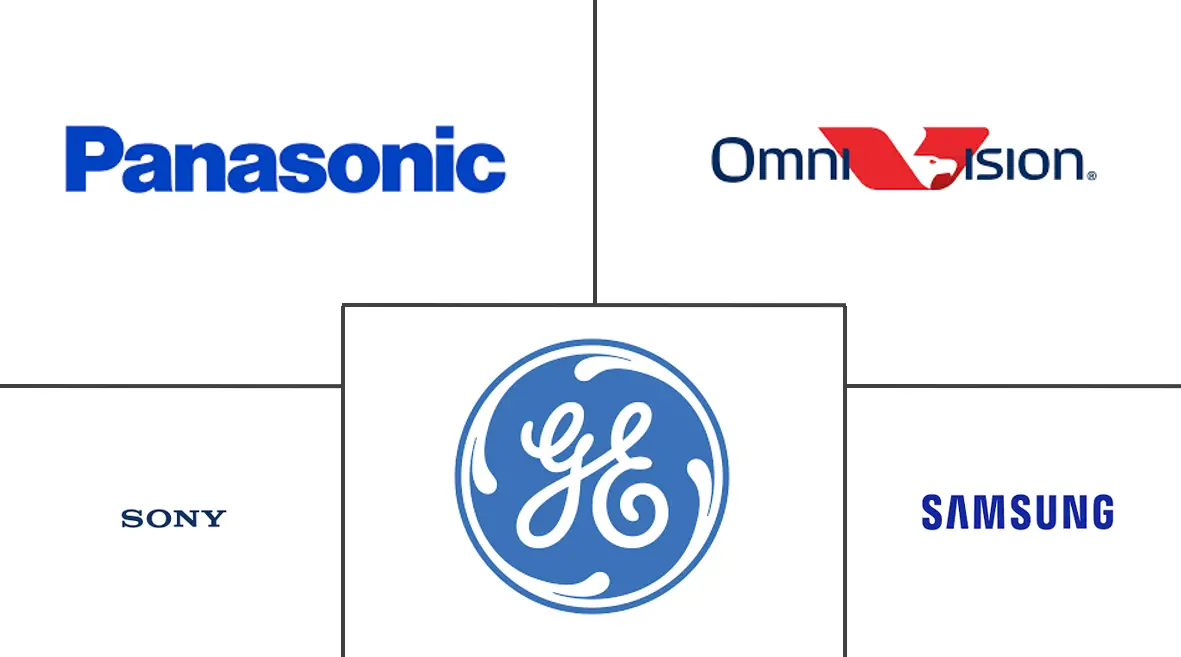Japan Optoelectronics Market Size and Share
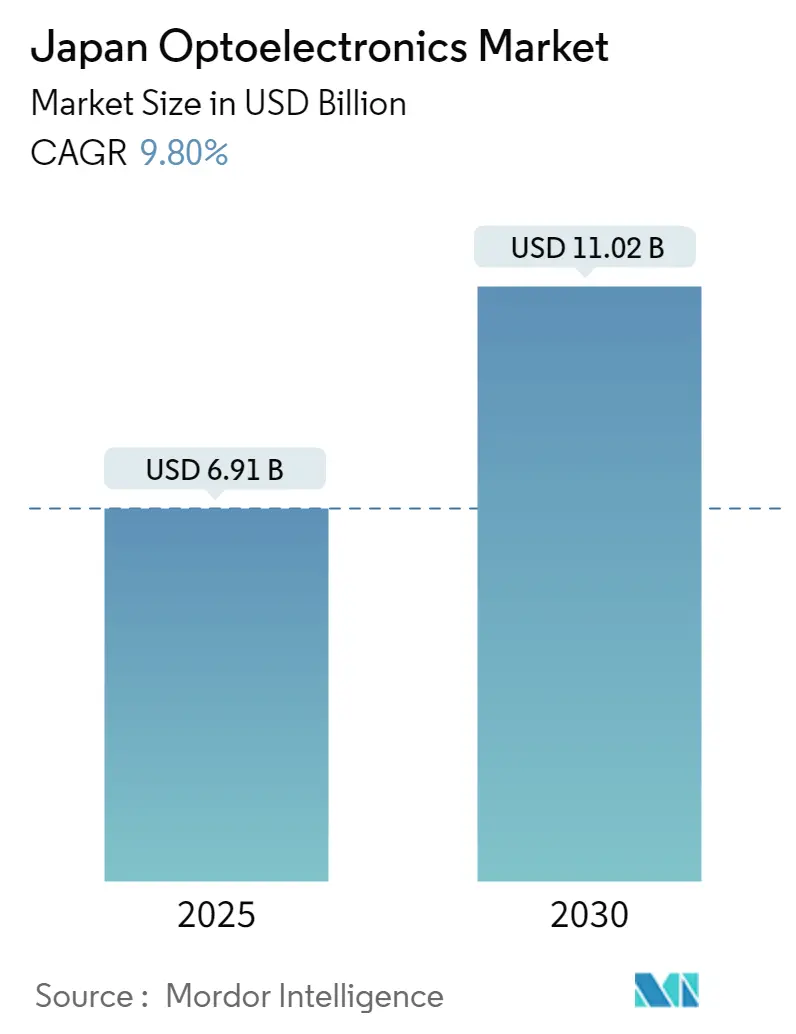
Japan Optoelectronics Market Analysis by Mordor Intelligence
The Japan Optoelectronics Market size is estimated at USD 6.91 billion in 2025, and is expected to reach USD 11.02 billion by 2030, at a CAGR of 9.8% during the forecast period (2025-2030).
- Optoelectronics include devices that either convert light energy to electricity or electricity to light energy. These devices account for a significant share of the semiconductors market and witness growing consumption across various verticals. In the current market scenario, two- and one-dimensional electron channels, including quantum wells and quantum wires, and cells for electrons known as quantum boxes or quantum dots, are currently being fabricated on large wafers and used in optoelectronic devices.
- The advancement in quantum semiconductor heterostructures and the progress in heterostructure technology are the immediate outcomes of the new advances in fabrication techniques in the studied market. The growing consumption of advanced manufacturing and fabricating technologies is further driving the consumption of optoelectronic components in the industrial sector, using laser and machine vision systems.
- Advances in optoelectronics have made considerable contributions to the efficient transmission of information via optical fibers (including communication between processing machines and within them), to the high-capacity mass storage of data in laser disks, and several other specific applications.
- Moreover, the increasing demand in the automotive industry, specifically with the increase in the adoption of electric vehicles, self-driven trucks, and autonomous vehicles, is expected to boost optoelectronic devices' adoption, further driving the market.
- The demand for the optocoupler is expected to pick momentum as the demand for smartphones, electric vehicles, and other optocoupler-supporting devices increases in the country are growing significantly. Optocouplers are extensively used in communications systems. In January 2022, according to the Japanese government, the United States and Japan recently signed an agreement to jointly invest approximately USD 4.5 billion to develop beyond 5G technologies. Such advancements call for efficient optocouplers in Japan.
- Further, in November 2022, Sony Semiconductor Solutions Corporation (SSS) announced the launch of a fee-based service on its edge AI sensing platform AITRIOS. The service is designed to streamline developing and implementing sensing solutions using edge devices such as AI cameras. This fee-based service comprising AITRIOS is Console Developer Edition, intended mainly to support application and AI developers working to create and operate solutions.
Japan Optoelectronics Market Trends and Insights
Automotive is Expected to Hold Significant Market Share
- The automotive industry is going through a transition phase, moving from the traditional internal combustion engine to electrification and towards alternate/clean energy technology. Among the emerging technologies, electric vehicles are gaining the highest traction.
- With the race to electrify automotive fleets, accelerating and more vehicles are arriving from more manufacturers every year. This increase in the number and type of electric vehicles has created opportunities for electronic device/component suppliers to grow their footprint in the vehicle's power electronics systems.
- These drive systems' high voltages and noisy environments require high performance and robust galvanic isolation to ensure safe and reliable operation. Additionally, the ever-increasing power densities from shrinking the sizes of electric vehicle subsystems and raising the wattages also create demanding thermal and electrical noise conditions, which in turn is driving the demand for advanced and highly effective isolation solutions.
- Considering the growth prospects, most optocoupler providers offer products targeted at the automotive sector. For Instance, Toshiba Electronic's analog output IC optocoupler TLX9309 consists of a high-output GaAlAs LED optically coupled to a high-speed detector. The detector also includes a photodiode, a transistor, and a Faraday shield integrated into the photodetector chip to enhance levels of common-mode transient immunity.
- Further, to maintain their competitiveness in the market, vendors place a high priority on the introduction of new products. For instance, Vishay Intertechnology unveiled the first automotive-grade linear optocoupler (VOA300) that is AEC-Q102 qualified and offers a quicker response time and improved gain stability in November 2022.
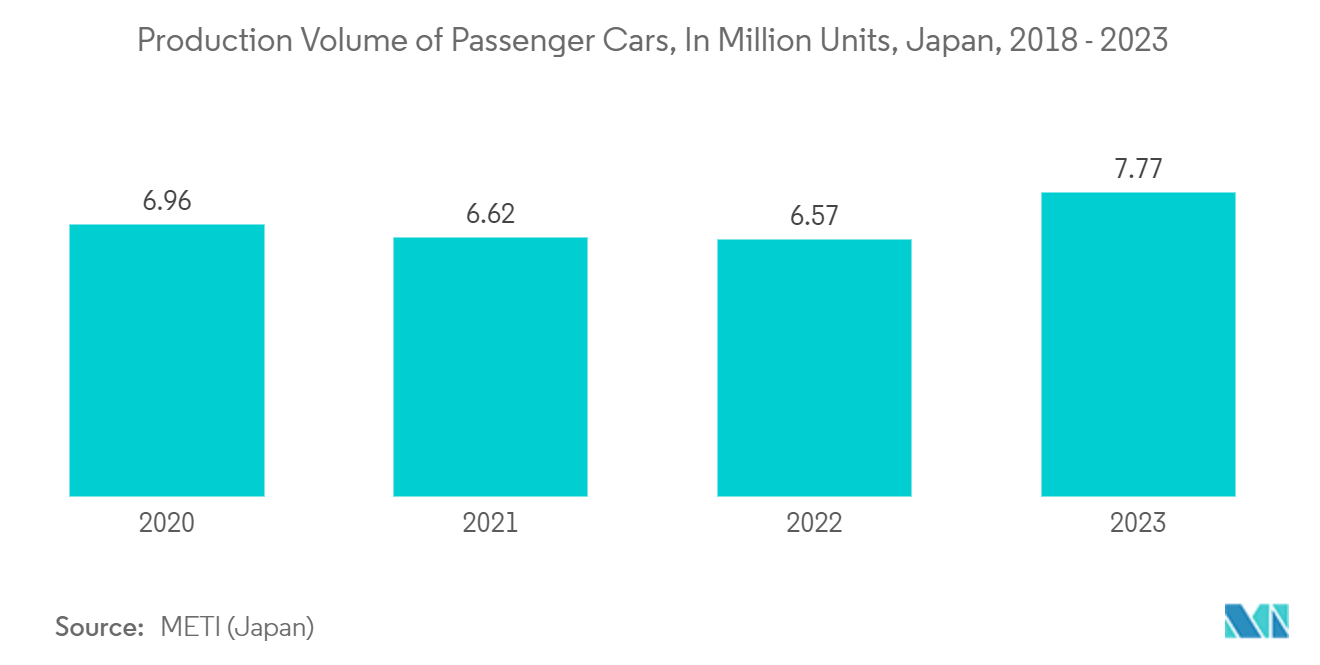
Consumer Electronics is Expected to Drive the Market
- Image sensors are integral to consumer electronic products, such as smartphones, tablets, and wearables. The image sensors that are built in today's consumer electronic devices use either charge-coupled device (CCD) or complementary metal-oxide semiconductor (CMOS) technology. With the growing adoption of such devices in the country, the demand for image sensors is expected to increase over the forecast period.
- Most CCD image sensors that have been developed for consumer applications possess built-in anti-blooming capability, in contrast to most of the CCDs that have been specifically designed for industrial and scientific applications.
- Moreover, recently, ON Semiconductor introduced a new 50-megapixel-resolution CCD image sensor. As the highest-resolution interline transfer CCD image sensor is commercially available, the KAI-50140 provides the critical imaging detail and high image uniformity needed not only for the inspection of smartphone displays but also for circuit board and mechanical assembly inspection, as well as aerial surveillance. The KAI-50140 is designed in a 2.18-to-1 aspect ratio to match the format of modern smartphones, reducing the number of images captured to inspect a full display.
- Further, in March 2022, STMicroelectronics announced a new family of high-resolution ToF sensors that bring advanced 3D depth imaging to smartphones and other devices. The 3D family debuts with the VD55H1, a sensor that maps three-dimensional surfaces by measuring the distance to over half a million points. Objects can be detected up to five meters from the sensor and even further with patterned illumination.
- Further, many start-ups also focus on product innovation for the studied market. For instance, in February 2022, Metalenz, a meta-optic lens technology start-up, unveiled a new polarization technology that will integrate polarization sensing into consumer and mobile devices and lead to better smartphone healthcare management features.
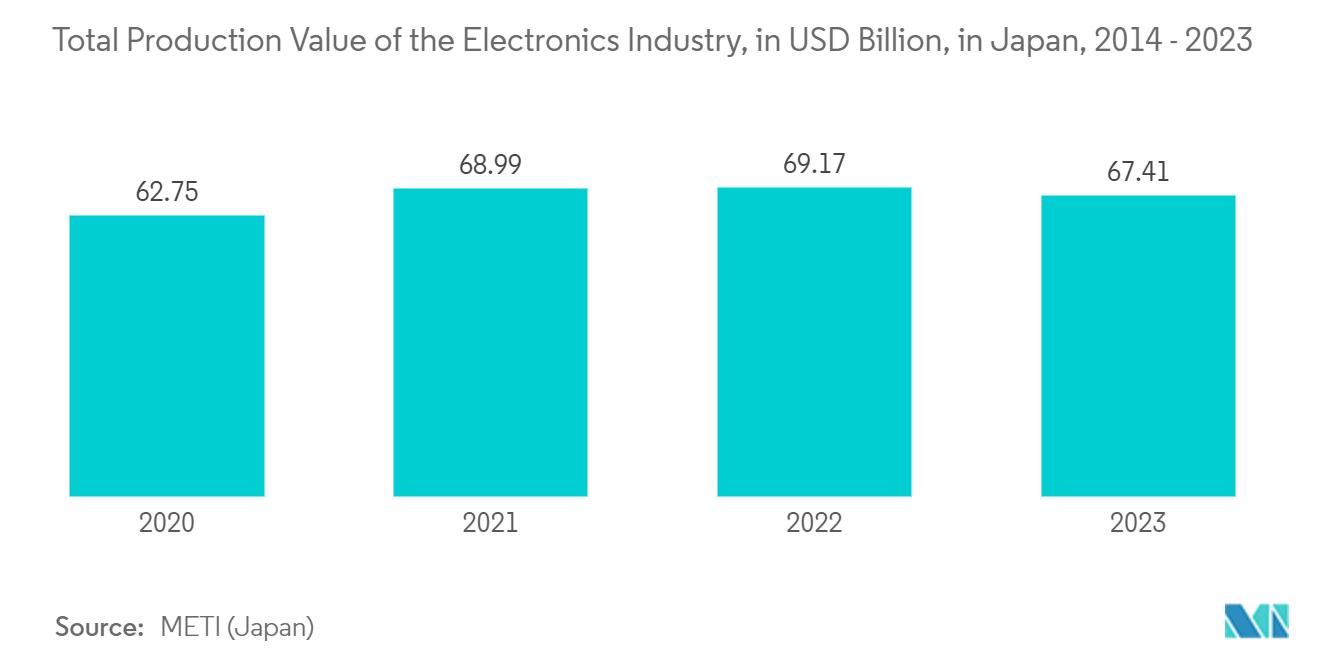
Competitive Landscape
The Japan optoelectronics market is fragmented and is expected to grow in competition during the forecast period owing to the entry of several MNCs. The vendors are focusing on developing customized solution portfolios to fulfill local requirements. Some of the major players operating in the market include General Electric Company, Panasonic Corporation, Samsung Electronics Co., Ltd., Omnivision Technologies Inc., Sony Corporation, Osram Licht AG, Koninklijke Philips N.V., Vishay Intertechnology, Inc., Texas Instruments Inc., etc.
In October 2022, Aixtron Se, a provider of deposition equipment to the semiconductor industry, received an order for an AIX 2800G4 MOCVD System from Furukawa Fitel Optical Device (FFOD) Co., Ltd., a Japan-based manufacturer of compound semiconductor devices.
In March 2022, Nisshinbo Micro Devices Inc. completed the development of the NJL5830R reflective-type optoelectronic sensor for touchless pushbuttons and will begin manufacturing in April 2022. The NJL5830R is an optoelectronic sensor of the reflecting type that combines a high-power infrared light emitting diode (LED) with a reception photo IC in a single package. This solution will help with infection management and hygiene by selecting buttons on extremely public infrastructure, including touchless automatic vending machines, ticket dispensing machines, and elevators.
Japan Optoelectronics Industry Leaders
-
General Electric Company
-
Panasonic Corporation
-
Samsung Electronics Co., Ltd.
-
Omnivision Technologies Inc.
-
Sony Corporation
- *Disclaimer: Major Players sorted in no particular order
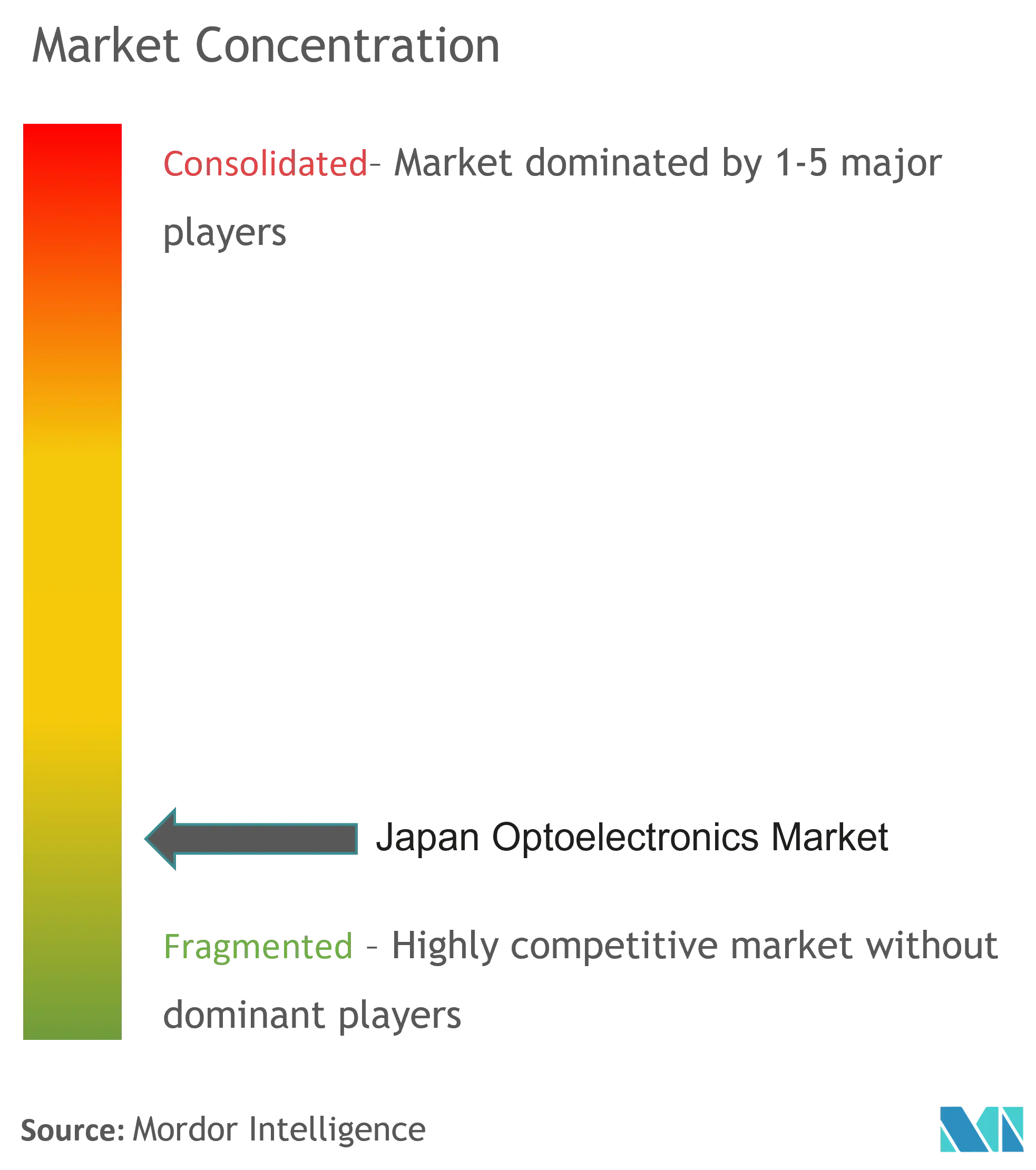
Recent Industry Developments
- February 2024: Analog Devices has struck a strategic deal with TSMC. Under this agreement, TSMC, a prominent semiconductor foundry, will provide Analog Devices with a steady supply of wafers through Japan Advanced Semiconductor Manufacturing (JASM), a manufacturing subsidiary majority-owned by TSMC, located in Kumamoto Prefecture, Japan. This collaboration, an extension of ADI's ongoing partnership with TSMC, bolsters ADI's capabilities in securing additional capacity for cutting-edge technology nodes. These nodes are crucial for ADI's diverse business applications, notably in wireless BMS (wBMS) and Gigabit Multimedia Serial Link (GMSL) sectors.
- February 2024: Qnami has forged a strategic commercial partnership with Quantum Design Japan and Quantum Design Korea, marking a significant move to introduce its quantum platform for sensing applications to East Asia. NV-based quantum sensors demonstrate their efficacy across diverse domains, from materials science and navigation to life sciences. Qnami has harnessed these sensors within its nano-scale mapping microscope, ProteusQ. Here, they play a pivotal role in the exploration and development of novel materials, crucial for the evolution of a more sustainable future device landscape.
Japan Optoelectronics Market Report Scope
Optoelectronics allows communication between the optics and the electronics that includes designing, studying, and manufacturing a hardware device that converts electrical energy into light energy and light into energy through semiconductors.
The Japan optoelectronics market is segmented by component type (LED, laser diode, image sensors, optocouplers, photovoltaic cells, and other component types) and by end-user industry (automotive, aerospace & defense, consumer electronics, information technology, healthcare, residential & commercial, industrial, and other end-user industries). The report offers market forecasts and size in value (USD) for all the above segments.
| LED |
| Laser Diode |
| Image Sensors |
| Optocouplers |
| Photovoltaic cells |
| Other Component Types |
| Automotive |
| Aerospace & Defense |
| Consumer Electronics |
| Information Technology |
| Healthcare |
| Residential & Commercial |
| Industrial |
| Other End-user Industries |
| By Component type | LED |
| Laser Diode | |
| Image Sensors | |
| Optocouplers | |
| Photovoltaic cells | |
| Other Component Types | |
| By End-user Industry | Automotive |
| Aerospace & Defense | |
| Consumer Electronics | |
| Information Technology | |
| Healthcare | |
| Residential & Commercial | |
| Industrial | |
| Other End-user Industries |
Key Questions Answered in the Report
How big is the Japan Optoelectronics Market?
The Japan Optoelectronics Market size is expected to reach USD 6.91 billion in 2025 and grow at a CAGR of 9.80% to reach USD 11.02 billion by 2030.
What is the current Japan Optoelectronics Market size?
In 2025, the Japan Optoelectronics Market size is expected to reach USD 6.91 billion.
Who are the key players in Japan Optoelectronics Market?
General Electric Company, Panasonic Corporation, Samsung Electronics Co., Ltd., Omnivision Technologies Inc. and Sony Corporation are the major companies operating in the Japan Optoelectronics Market.
What years does this Japan Optoelectronics Market cover, and what was the market size in 2024?
In 2024, the Japan Optoelectronics Market size was estimated at USD 6.23 billion. The report covers the Japan Optoelectronics Market historical market size for years: 2019, 2020, 2021, 2022, 2023 and 2024. The report also forecasts the Japan Optoelectronics Market size for years: 2025, 2026, 2027, 2028, 2029 and 2030.
Page last updated on:
Japan Optoelectronics Market Report
Statistics for the 2025 Japan Optoelectronics market share, size and revenue growth rate, created by Mordor Intelligence™ Industry Reports. Japan Optoelectronics analysis includes a market forecast outlook for 2025 to 2030 and historical overview. Get a sample of this industry analysis as a free report PDF download.
